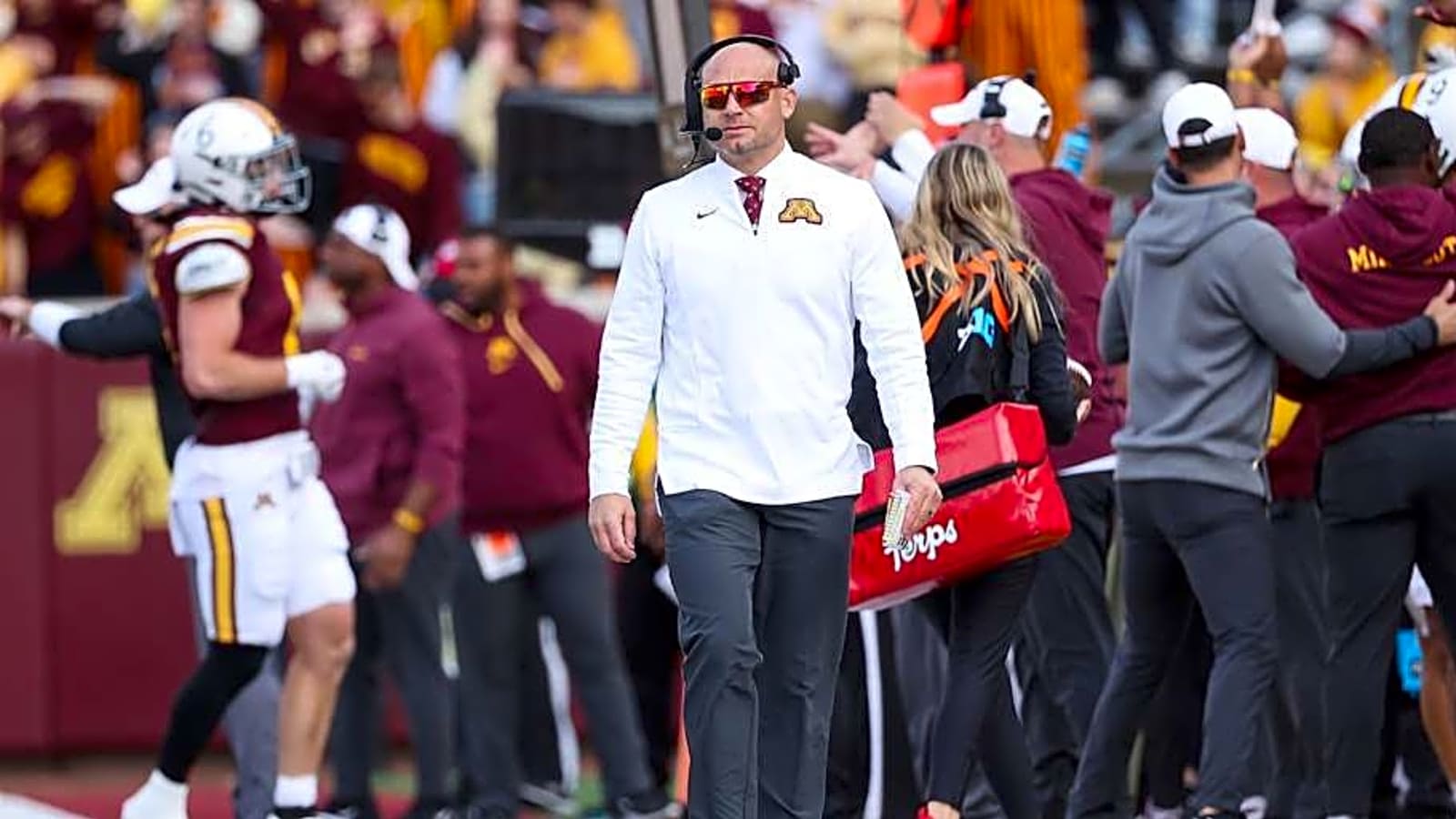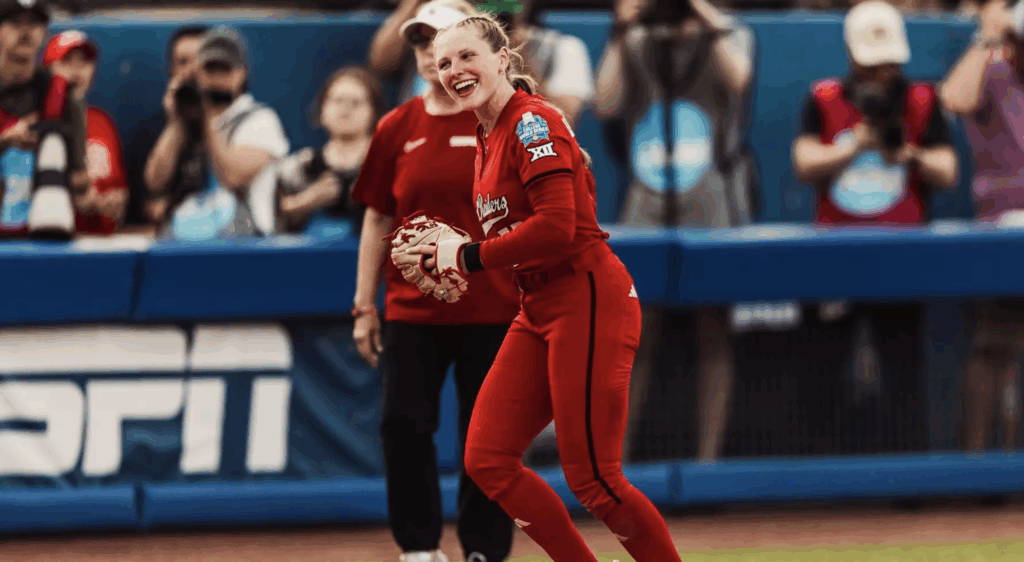NIL
Will NCAA Proposal to Grandfathering Athletes Help Approve House Settlement?
The NCAA and the commissioners of the power conferences are gambling that their new brief will hit the target in the House vs. NCAA settlement case. The brief, filed in the court of U.S. District Judge Claudia J. Wilken earlier this week, is geared to address her concerns about the potential damage done to athletes […]



The NCAA and the commissioners of the power conferences are gambling that their new brief will hit the target in the House vs. NCAA settlement case.
The brief, filed in the court of U.S. District Judge Claudia J. Wilken earlier this week, is geared to address her concerns about the potential damage done to athletes that will be cut due to the roster limits imposed by the case.
Wilken has told attorneys on both sides that the approval of the case may rest on whether the NCAA and the power conferences address this concern to her satisfaction.
The brief outlines what NCAA and power conference attorneys have settled on as a framework to address Wilken’s concerns.
Per On3 Sports and other outlets, the proposal would allow schools that opt-into revenue sharing to phase in roster limits. It would also allow athletes who had their positions cut to be eligible to be reinstated, but it would be at the school’s discretion. If the athlete can’t return to their school, they can retain the grandfather status at a new school.
The NCAA worked with the plaintiff’s attorney, Jeffrey Kessler, to create the new language. Kessler said that the athletes in question would carry those exemptions their entire career. This would include athletes who have already been cut and prep athletes who were set to receive roster spots in 2025-26 but had them withdrawn due to the new roster limits.
They also would not count against the roster limits set to be imposed in the House settlement.
If approved, this would be a significant concession to athletes that, in some cases, have already been shown the door. Every school that is opting in is dealing with the issue. Clemson is a good example. Athletic director Graham Neff said the athletic department had 275 scholarships for all NCAA sports in 2024-25. The new settlement will allow the Tigers to fund 425 scholarships.
But the Tigers had 590 total athletes in 2024-25. In some cases, they’ve already told those athletes their spot is gone.
This compromise would give those athletes some recourse. But schools are not required to take them back. One, Notre Dame, has already vowed that they will take all released athletes back if they want to come back.
The lack of a requirement may give Wilken pause. The fact that Kessler was involved in negotiating the compromise may be enough for her to give the settlement final approval.
But it’s certainly better than the NCAA’s first proposal, which was to do nothing for the athletes that lost scholarships as a result of the settlement.
NIL
SEC Spokesman Predicts Huge Academic Loss for Transfer Portal Abusers as NIL Debate Grows Louder
The NCAA transfer portal has revolutionized college sports, giving athletes unprecedented freedom to move between programs. But as the debate over Name, Image, and Likeness (NIL) intensifies, SEC officials warn that the academic toll of frequent transfers, especially among those chasing NIL deals, may be far greater than many realize. Academic Fallout from SEC Transfer […]

The NCAA transfer portal has revolutionized college sports, giving athletes unprecedented freedom to move between programs. But as the debate over Name, Image, and Likeness (NIL) intensifies, SEC officials warn that the academic toll of frequent transfers, especially among those chasing NIL deals, may be far greater than many realize.
Academic Fallout from SEC Transfer Portal Free Agency
Pete Nakos recently shared a pointed warning from SEC Associate Commissioner William King:
SEC’s William King on impact of transfer portal to lawmakers: “Right now, basically unlimited transfers. You can transfer as much as you want. The focus has entirely been on tampering and rebuilding rosters. Nobody talks much about what it does to education.
“… I fully expect…
— Pete Nakos (@PeteNakos_) June 12, 2025
King’s remarks highlight a growing concern: while the transfer portal and NIL have created a college sports free agency, the academic consequences are often overlooked. Research backs this up. A 2018 National Student Clearinghouse study found that 39% of undergraduates transfer at least once, and those who transfer multiple times face even steeper academic risks.
The numbers tell a stark story. Last year, over 31,000 student-athletes entered the NCAA transfer portal, with more than 25% of scholarship football players now making a move annually. While the portal offers athletes a legitimate escape from bad situations, such as a lack of playing time or coaching changes, the academic disruption is profound.
However, the impacts on academics are serious. Students often lose 60–70% of their credits when switching colleges, which can delay graduation for one to two years and may even lead to the repetition of core courses in their new schools.
JT Daniels, who had been a college quarterback, had to transfer four times in six years, and while he was doing so, most of his credits couldn’t be transferred, which is the same tragic story that most big-name athletes share.
The rise of NIL has dramatically enhanced this trend. Some athletes can greatly influence a university’s transfer process by using their move as a key part of their strategy. In this way, the transfer portal acts as the marketplace. For instance, Jordan Addison has been disclosed with NIL prospects, the sum of which was even over $3 million for his transfer.
In contrast, Zay Flowers was offered such a substantial amount of money that he said no to it and thus, stayed where he was. All of this is like an arms race, continually leading to the experience of a complete reshuffling of the teams’ rosters. Around 2,611 FBS football players had to go to the portal within one semester of the last year.
Unfortunately, while the programs desperately hunt for the best athletes to replace the lost ones on the team and keep the top talents from leaving, the service to the players is, more often than not, replaced by the educational mission.
2-Round 2025 NBA Mock Draft: Kasparas Jakučionis Gives Hope to Rebuilding Nets, Cedric Coward Leaps Into First Round
Changes in the SEC’s transfer records suggest a direct connection between losses in terms of depth and academic performance, as occurred with Ty’Son Williams from South Carolina, making the point about the flexible portal always leading to athletes’ success highly controversial.
NIL
Texas Tech infielder Bailey Lindemuth enters transfer portal
With the influx of talent coming into Lubbock, there are only so many seats at the table. As reported earlier in The Dugout, talented Texas Tech infielder Bailey Lindemuth has entered the transfer portal. Lindemuth was the Red Raiders’ primary starting at third base as a freshman during their national runner-up season. She hit .305 […]

With the influx of talent coming into Lubbock, there are only so many seats at the table. As reported earlier in The Dugout, talented Texas Tech infielder Bailey Lindemuth has entered the transfer portal.
Lindemuth was the Red Raiders’ primary starting at third base as a freshman during their national runner-up season. She hit .305 with eight doubles, five home runs and 32 RBIs in 68 games. Lindemuth also pitched and became a very reliable defender by the end of the season.
There are plenty of high-level teams that will be interested in the Burleson, Texas native, especially those looking to resupply their infield.
For more transfer portal news, stay up to date with the Softball America transfer wire.
More from Softball America:
Show Me The Money Notebook
Teagan Kavan’s historic WCWS performance leads Texas to first national championship
Softball America Top 100 Players of the 2025 season
NIL
Greg Sankey assesses future of non-revenue, Olympic sports after House settlement approval
In the week since the House v. NCAA settlement received final approval, the college sports world began making its preparations for a new era. Revenue-sharing is on the way, as are roster limits and the new NIL Go clearinghouse to vet NIL deals. Much of the conversation has been around revenue sports such as basketball […]

In the week since the House v. NCAA settlement received final approval, the college sports world began making its preparations for a new era. Revenue-sharing is on the way, as are roster limits and the new NIL Go clearinghouse to vet NIL deals.
Much of the conversation has been around revenue sports such as basketball and football. However, there are still concerns about non-revenue and Olympic sports, and SEC commissioner Greg Sankey made it clear the plan is to avoid cutting sports under the new model.
Sankey said while he, too, has heard about athletics departments changing structure and making staff moves, the sense from his conversations is that schools are not looking to eliminate sports programs. But he noted the need for a consistent model and oversight. Otherwise, he warned that things could change.
“The second is at least in the Southeastern Conference — and we have to be aware that, as you have a $20 million outflow from a revenue sharing standpoint, that creates pressures,” Sankey said Friday on FanDuel Sports Network’s Golic and Golic. “And you’ve seen stories about that pressure resulting in some changes to personnel, or maybe the way expenditures are overseen in athletic departments. What has been the topic of focus in our room is not reducing the sport opportunities. That’s speculated about.
“What I will say is there has to be a point where this revenue-sharing model and the third-party oversight sticks and is consistent. And we have that opportunity now. If it continues to grow, I think that’s an enormous threat to those Olympic sports, or the non-revenue sports.”
Per the terms of the House v. NCAA settlement, schools have the ability to share up to $20.5 million with athletes if they opt in to revenue-sharing. Football is expected to receive 75%, followed by men’s basketball (15%), women’s basketball (5%) and the remainder of sports (5%). The amount shared in revenue will increase 4% annually.
The growing sense is that schools will be able to decide how to divide up their revenue-sharing after House settlement approval. Big 12 commissioner Brett Yormark said that’s the case in his conference, and some schools in others have confirmed which sports will participate in revenue-sharing.
At Oklahoma, six programs will be part of the rev-share plan: football, men’s and women’s basketball, baseball, softball and women’s gymnastics. Ohio State also said its football and basketball programs would all participate, in addition to women’s volleyball. The hope is to expand to more sports down the road, athletics director Ross Bjork said.
NIL
Angel Reese responds to ‘Mebounds’ term, hints at plan to trademark it
There’s no denying that Chicago Sky forward Angel Reese has established herself as an elite rebounder early in her WNBA career. But some fans online have often trolled her, claiming that the numbers are inflated due to the number of second, or sometimes third, chances she gets off her own misses. It’s gotten to the […]

There’s no denying that Chicago Sky forward Angel Reese has established herself as an elite rebounder early in her WNBA career. But some fans online have often trolled her, claiming that the numbers are inflated due to the number of second, or sometimes third, chances she gets off her own misses.
It’s gotten to the point where the term “mebounds” has been coined by some to describe it. Reese hasn’t been immune from seeing it when she logs online either, and responded to the criticism in a Tik Tok post.
“Whoever came up with the ‘mebounds’ thing, y’all ate that up,” she said. “Because rebounds, mebounds, keybounds, crebounds, tebounds — anything that comes off that board, it’s mine. And a brand? That’s six figures right there. The trolling, I love when y’all do it because the ideas be good.”
Reese’s comments about a brand suggest that she may attempt to try to trademark the term and make some merchandise off of it. She even responded to a post on X that claimed that’s what she intended to do, tagging her agent Jeanine Ogbonnaya.
Reese is in her second season with the Sky after being drafted with the No. 7 pick in the 2024 WNBA Draft out of LSU, where she won a national championship in 2023. She broke the league record for rebounds in a single season with 446 as a rookie while also setting another record for consecutive double-doubles with 15.
Reese’s rebounding average is double slightly so far this season from 13.1 to 11.8. Her points per game has also dropped from 13.6 to 10.3 through the first nine games, though there is plenty of season left to get both averages up.
Surprisingly, she is shooting just 36.3% from the floor and has more total rebounds (106) than points scored (93) this season. The shooting numbers are certainly a fair criticism, but Reese argued that her rebounding prowess goes far beyond her own missed shots.
“Because statistically, all the rebounds that I get aren’t always just mine,” she said. “They’re defensive too or somebody else’s on my team. But yeah, when ya’ll came up with ‘mebounds,’ y’all ate that.”
So far this season, Angel Reese and the Sky are out to a 2-7 record. They’ll be back on the court Sunday at 12 p.m. ET when they take on the Connecticut Sun on the road.
NIL
Taylor Pannell’s Dad Goes Rogue With Deleted Jabs At Tennessee
© Saul Young/News Sentinel / USA TODAY NETWORK via Imagn Images Audio By Carbonatix Former Tennessee softball player Taylor Pannell intends to transfer to Texas Tech for her redshirt sophomore season. The outfielder announced her plans to leave Knoxville earlier this offseason. The Vols won 47 games last year while making a run to the […]


© Saul Young/News Sentinel / USA TODAY NETWORK via Imagn Images

Audio By Carbonatix
Former Tennessee softball player Taylor Pannell intends to transfer to Texas Tech for her redshirt sophomore season. The outfielder announced her plans to leave Knoxville earlier this offseason.
The Vols won 47 games last year while making a run to the Women’s College World Series. Despite the success, she’s opted for greener pastures.
Pannell played a huge role in Tennessee’s dream season. She hit a team-leading .399 with 16 home runs and 65 RBIs. She paced the lineup in runs scored, total bases, doubles, hits, and at-bats.
The Volunteers hoped the production would return in 2026. That won’t be the case. She’s headed to Lubbock.
Texas Tech backed the Brinks truck up to land Taylor Pannell’s commitment. It’s something the program’s quite familiar with doing.
Last year, they paid pitcher NiJaree Canady $1 million to join the roster after she left Stanford. It paid off with an appearance in the national championship series.
The Red Raiders finished one win shy of a national title. They’ll now continue to spend in hopes of bringing a trophy home next year.
While Pannell is eager to join her new team, her family is burning its bridge with her former school.
Taylor Pannell’s dad went rogue on social media.
— National Champion Tony Vitellos Smile
(@bigorangetony) June 15, 2025
Brandon Pannell posted a series of bizarre tweets aimed at Vol Nation. Most disrespected fans of the program, with some crossing the line of insensitivity.
In one particular response, he provided reasoning to his daughter’s move. NIL seems to have played a large role.
Yikes….NIL has gotten way out of hand pic.twitter.com/DYZZhwu1Gp
— Andy McBroom (@AndyJMacc) June 15, 2025
It’s been reported that the Red Raiders plan to spend $55 million on student-athletes between NIL and revenue sharing. Some of that small fortune is going into Taylor Pannell’s bank account.
Brandon Pannell flaunted that wealth this weekend. While Texas Tech will get a superstar on the diamond, they might also have a headache in Pannell’s dad.
NIL
NCAA explains multi-year player contracts with incentives and buyouts
Though overdue and underutilized, it appears athletic departments will finally include stability and consequences into name, image and likeness contracts with their players. A lengthy Q&A crafted and distributed by the NCAA covers several aspects of the post-House settlement world, and one section relevant to this conversation addresses multi-year contracts with players, buyouts and incentives. For starters, the […]

Though overdue and underutilized, it appears athletic departments will finally include stability and consequences into name, image and likeness contracts with their players.
A lengthy Q&A crafted and distributed by the NCAA covers several aspects of the post-House settlement world, and one section relevant to this conversation addresses multi-year contracts with players, buyouts and incentives.
For starters, the NCAA said that contracts covering “additional payments” do count against the “benefits cap,” which is the $20.5 million limit schools are now permitted to split up among those participating in NCAA sports on campus. If a school pays a player a share of revenue and/or NIL, which is also permissible now, the amount specified for a year in the contract is counted toward the cap that year. The amount specified for any subsequent year counts toward that year.
In short, the school has to report the benefit in the year the benefit is provided. That’s important to note if and when takes its NIL operation in-house. If NIL agreements are with WVU, the payments count toward the cap. If NIL agreements are made outside of WVU, those wouldn’t count toward WVU’s cap.
The example the NCAA provides details a two-year agreement and includes a “signing incentive.” A player is promised $50,000 “upon enrollment” as well as $100,000 on Jan. 1 of the first year and then $100,00 on Jan. 1 of the second year. The school would have to count $150,000 for the first year, because the player received the signing incentive and the annual payment. The school would count the second $100,000 annual payment for the second year.
However, the NCAA also acknowledges the obvious, which is that players will inevitably breach the contract and transfer to another school. The NCAA presented a scenario with a $100,000 payment split into $50,000 paid at the beginning of the academic year and the remaining $50,000 paid at the end of the academic year and, most importantly, a $100,000 buyout if the player transfers.
Supposing the player transfers before the end of the academic year, the school has made just one of the $50,000 payments and counts that toward the cap. The second payment never happened, so it doesn’t count. The new school that the player transfers to then pays the original school a $100,000 buyout, and that’s one benefit of bringing NIL in-house.
If a WVU player transfers to a new school and breaches the NIL contract with WVU’s in-house setup, the player’s new school would pay WVU the buyout. However, if that transferring player breaches an NIL contract with a third party NIL and not with WVU, the new school wouldn’t owe WVU anything and would only pay the third party the buyout if that was in the NIL contract.
In the NCAA’s scenario, the new school has to count the $100,000 buyout, as well as any other payment promised and made to the player that year, toward the cap. The new school “may not increase its benefits cap allowance by $100,000 as a result of this buyout payment.”
The NCAA is also allowing contract incentives and explained a scenario for a two-year contract with a payable bonus if a player has a 3.0 GPA after the fall semester. The player is to be paid $50,000 on Jan. 1 of the first year and Jan. 2 of the second year, and both payments would count toward the cap for the respective year. If the player earns the incentive, the $5,000 counts, and if the player falls short of the GPA “the payment will be removed from the benefits cap allowance for that year.”
-

 College Sports2 weeks ago
College Sports2 weeks agoIU basketball recruiting
-

 Health1 week ago
Health1 week agoOregon track star wages legal battle against trans athlete policy after medal ceremony protest
-

 Professional Sports2 weeks ago
Professional Sports2 weeks ago'I asked Anderson privately'… UFC legend retells secret sparring session between Jon Jones …
-

 Professional Sports2 weeks ago
Professional Sports2 weeks agoUFC 316 star storms out of Media Day when asked about bitter feud with Rampage Jackson
-

 Rec Sports3 weeks ago
Rec Sports3 weeks agoScott Barker named to lead CCS basketball • SSentinel.com
-

 Rec Sports3 weeks ago
Rec Sports3 weeks agoJ.W. Craft: Investing in Community Through Sports
-

 Motorsports3 weeks ago
Motorsports3 weeks agoNASCAR Penalty Report: Charlotte Motor Speedway (May 2025)
-

 Motorsports3 weeks ago
Motorsports3 weeks agoRockingham Speedway listed for sale after NASCAR return
-

 College Sports3 weeks ago
College Sports3 weeks agoOlympic gymnastics champion Mary Lou Retton facing DUI charge
-

 Motorsports3 weeks ago
Motorsports3 weeks agoKyle Busch issues damning NASCAR statement after latest Cup Series blow



 (@lilly__lover)
(@lilly__lover) 



























